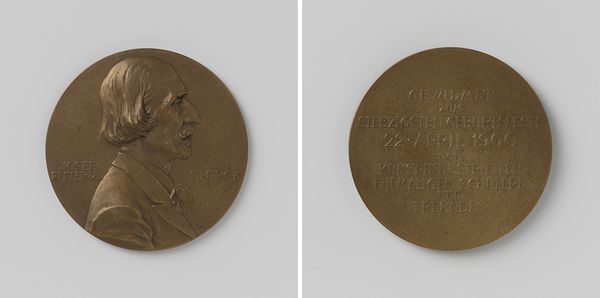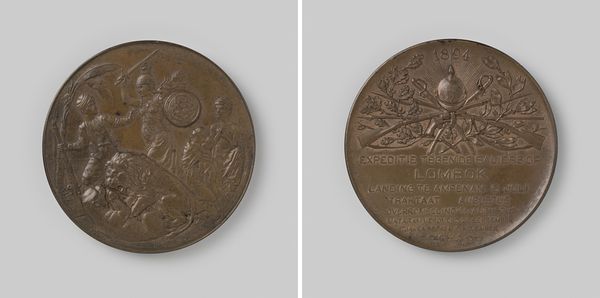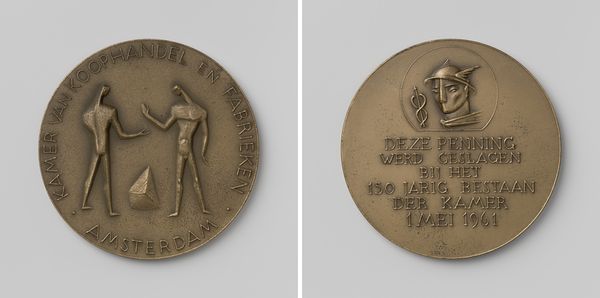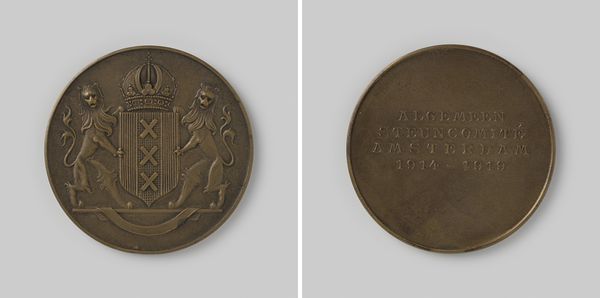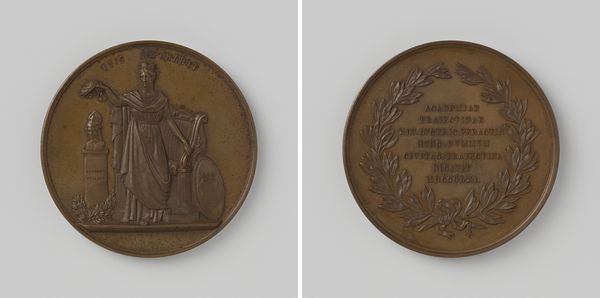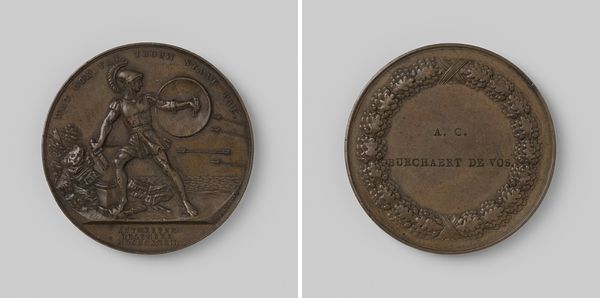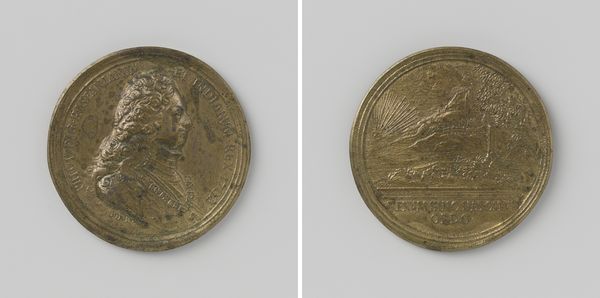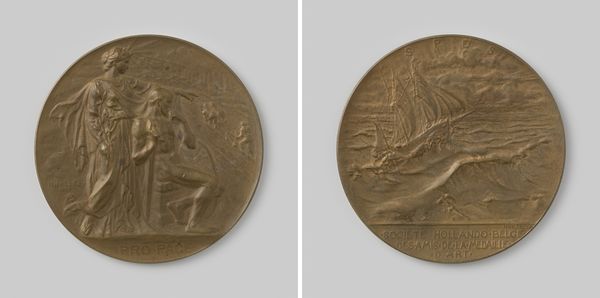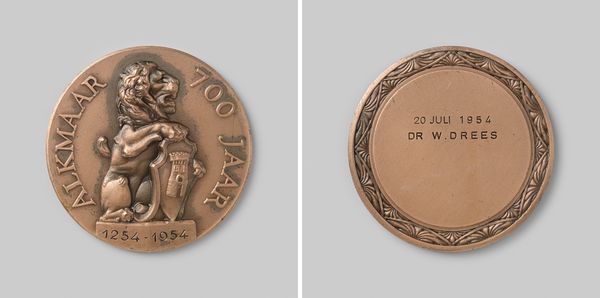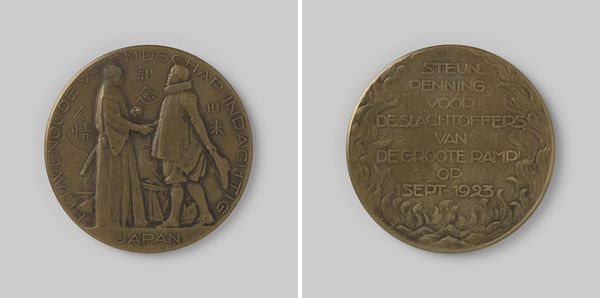
Beloningspenning van de verzekeringsmaatschappij De Oude Zwolsche van 1895 te 's-Gravenhage (1922) 1922
0:00
0:00
metal, relief, sculpture
#
portrait
#
metal
#
sculpture
#
relief
#
figuration
#
sculpture
Dimensions: diameter 5.0 cm, weight 52.59 gr
Copyright: Rijks Museum: Open Domain
Curator: Here we have a relief sculpture dating from 1922. The piece, made of metal, is entitled "Beloningspenning van de verzekeringsmaatschappij De Oude Zwolsche van 1895 te 's-Gravenhage," and it comes to us from the hand of Eduard Hüttl. Editor: My first impression is one of rather somber stateliness. The relief is executed with incredible precision, giving these horses a sense of formal elegance, though in such a small size. Curator: Yes, the formality is quite pronounced. Observe how the artist uses the limited depth to suggest volume and musculature. The interplay of positive and negative space creates a compelling sense of depth and motion despite its actual stillness. The composition directs the viewer's eye from the rearing horses towards the horizon. Editor: Looking closely, you begin to understand that the surface has a smooth, almost tactile quality, enhanced by the play of light. Consider how metal was crafted and refined by skilled laborers—artisans executing precise molds. This elevates metal from common commodity to a cherished emblem within a corporate narrative. It evokes questions about class, labor conditions, and societal values embedded in material objects. Curator: Certainly, the choice of metal contributes to the object's symbolism. Its durability speaks to enduring value, reflective perhaps, of the values of this insurance company. We could read the figuration of the horses as representing themes of strength, reliability, and partnership, which is underscored on the reverse with engraved, bureaucratic language that seems almost at odds with such idyllic figuration. Editor: Exactly. The transition in textures—the smoothness of the coin, and the raised areas that form the horses—implies stages of production. From a fluid substance shaped by human intervention to create something not only lasting but with a complex social function. It's also worth examining how a coin-like item—generally mass-produced—adopts artistic significance, prompting thoughts about hierarchies within craftsmanship and art. Curator: Very insightful. This melding of classical figuration with corporate symbolism and historical context invites one to contemplate art’s relationship with society and industry in the early 20th century. Editor: Indeed, such objects highlight hidden layers of intent and purpose intertwined with an artifact designed with utilitarian motives, bringing historical production into discussions on value within cultural works.
Comments
No comments
Be the first to comment and join the conversation on the ultimate creative platform.

